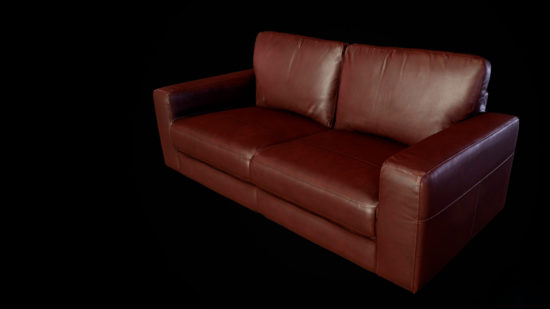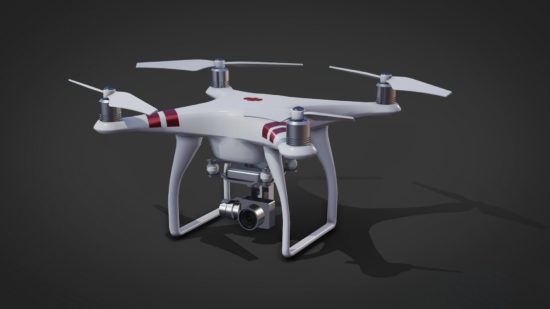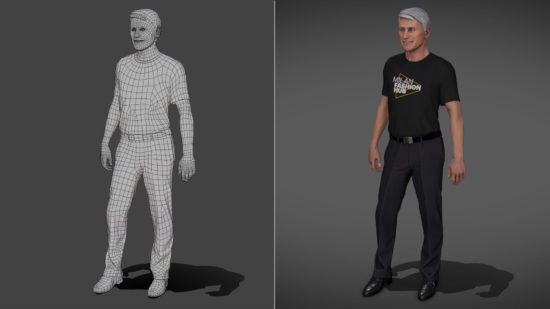Plenty of industries require complex visualization and unique art content for work. However, despite the type of project you are working on, you can’t go far without a proficient technical artist. But how do you recognize a truly qualified professional among the hundreds of resumes sent to you? It’s a good question!
We will reveal the first secret to finding the 3D artist of your dreams right away — there is a more trustworthy way than posting a vacancy on the internet, which is technical art outsourcing. Reliable companies hire the best professionals, and some of them dedicate their employees to other projects.
From this article, you will learn more about the features of this job position, types of specialists, their required skills, and where exactly you can hire technical artists who will make your project flawless.
What is a technical artist?
A technical artist (TA) is a specialist with deep technical expertise and skills working on complex art projects. While they can perform tasks related to developing, coding, and applying mathematical knowledge, they also optimize artists’ work. Moreover, technical artists are integral in video game development and sometimes manufacturing, construction, and engineering projects.
What does a technical artist do?
A technical artist’s role implies specific tasks between an artist and developer, such as creating blueprints, pipelines, technical sketches, VFX (visual effects), rigging characters, working with game engines, and beyond.
Since a technical artist should be well acquainted with the technical aspects of creating art from start to launch, the specialist helps colleagues in finding comprehensive solutions to their challenges and the most effective ways to achieve a goal of particular art creation.
The difference between artistic and technical drawing
Speaking of artistic drawing vs. technical drawing, the artistic one is determined by an artist’s ability to interpret a picture subjectively, and only their imagination limits it. Usually, they try to convey the emotion or nature of something without focusing on realistic features.
On the other hand, technical drawing represents the essence of objects based on their fundamental properties and the laws of physics. Such drawings are also called engineering because they depict mechanical parts and have mathematically accurate proportions.
Looking for a technical artist for your new project? Let’s begin with a discussion!
Technical artist skills required for severe projects
Since technical artists perform tasks related to various jobs, they usually work in a team consisting of a lead artist, creative director, and developer. This means technical artist requirements are a mix of multiple soft & hard skills that should cover the collaboration needed for working with each of the mentioned specialists.
Soft skills
- High attention to detail;
- Strong analytical and troubleshooting skills;
- The ability to work independently and in a team of different specialists;
- Creative set of mind;
- Communication and openness;
- Prioritization and multitasking;
- Initiative for problems finding and solving;
- Adaptability to different kinds of projects.
Hard skills
- Comprehending the art creation workflow down to the tiniest detail;
- High level of artistic skills (drawing, painting, sculpting, etc.);
- 2D/3D animation skills, including rigging and skinning;
- Defining the best ways, tools, and software to achieve art project goals;
- Mastery working with CGI, modeling, animation, VFX software (3Ds Max, Maya, Adobe AfterEffects, Unreal Engine, etc.);
- Program engineering with the use of dynamic scripting and programming languages (MaxScript, Mel, JavaScript, Python, C++, C#).
You can also learn more about the 7 golden rules for choosing an outsourced art and 3D modeling company.
Different types of technical artists
Looking at the list of skills and abilities of a technical artist, one might think that TAs are a jack of all trades, but this is not quite right.
Likewise, many people think of psychologists as specialists who are well-versed in all areas of psychology, from standard psychotherapy to working with children with special needs. In fact, technical artists, like therapists, have different specializations. They have in-depth expertise in only one or two fields, while other knowledge is the foundation.
Thus, we’ve prepared a detailed description of different types of technical artists so that you can choose a narrowly focused specialist who would be ideal for your project.
Expertise in professional software
A video game technical artist is one of the most common positions in this profession, requiring expertise and working experience with two main game engines — Unreal Engine and Unity. However, technical artists use these and other software for engineering, construction, manufacturing projects, etc. So you are welcome to explore what software is more used by different types of artists.
Unreal Engine technical artist
Unreal Engine (UE) is developed and maintained by EpicGames studio, so it’s made as game development software with multiple tools needed for game creation.
However, in the case of a technical artist, Unreal Engine is used for top-notch modeling, animation, VFX creation, and the like for various projects. It can be a construction or engineering prototyping as well as complex art creation for XR solutions.
Unity technical artist
Unity is a game engine similar to Unreal Engine with a few differences, so it’s more a matter of companies choosing certain software which is more suitable for their needs.
For example, Unity is preferred when a technical artist’s main task is to create and optimize 3D models for a project, as software has a pre-ready asset base wider than in UE. In addition, Unity allows better scripting creation, which is a common task for a technical artist, and they have a helpful guide for technical artists.
Other software for technical art
Specialists are working on projects far from game development, usually more in need of blueprint creation, engineering drawings, and sketches.
That’s when the core expertise of a technical artist lies in software like Autodesk Technical Drawing, Autodesk Product Design Suite, or any CAD (computer-aided design) software/app made for automated calculations and design.
Expertise in a specific type of art
Working on a project, you might want to focus on one type of art, choosing between 2D and 3D to keep the process straight. So when you decide which technical artist would meet your project’s needs, you can take a look at the table below defining a specific type of technical artist by the type of art they specialize in.
2D technical artist
2D art creation skills are highly valuable for technical artists, as there are plenty of projects requiring broad experience in designing flat graphics, technical/engineering sketches, blueprints, and the like.
In addition, 2D games are not inferior in popularity to 3D ones, even in the era of hyperrealistic art and high-poly models. Therefore, technical artists specializing in 2D art will be especially useful for 2D game development companies.
3D technical artist
If you require realism in your project, a technical 3D artist will come in handy indeed. 3D games, detailed prototypes, complex animation, and stunning visual effects are all the specialization of a technical artist working with three-dimensional art.
The main things to consider before you hire a 3D modeler are a high level of development skills as well as working with advanced software & tools required for 3D art creation.
Tech art specializations
When a technical artist comes to your team, they are usually expected to be experts in specific tasks, so it’s better to choose a specialist according to their future job.
-
Modeling technical artist. Modeling is one of the most typical tasks for technical artists in any 3D project that implies texturing, rendering, and other related skills. The main rule for these specialists is to deliver realism and a high level of detail. Eventually, you can hire a narrowly focused artist for the kind of models you need.
-
Assets creation/prototyping technical artist. Specialists focused on digital stuff creation are doing great in 3D product visualization for e-commerce projects, as well as 2D/3D game assets development and prototyping for engineering, manufacturing, and construction industries.
-
Environment technical artist. This specialist usually works on the creation of gaming environments building photorealistic buildings and scenes. In addition, technical artists can design environments for construction and real estate (exterior/interior) projects, creating 2D blueprints or 3D presentations.
-
Character technical artist. Artists with this specialization usually model 3D characters for hyper-realistic games and corporate solutions (for example, an instructor in VR training) and even create avatars for the metaverse. Character TAs are experts in modeling, sculpting, texturing, rigging, skinning, and other complex processes.
-
Animation technical artist. Bringing characters or scenes to life, technical artists make it in a way it looks highly natural. In animating characters, artists use rigging & skinning techniques based on calculations and actual anatomy principles. Moreover, TAs deal with AR/VR experiences to make them flawless.
-
VFX technical artist. You can’t go far without a technical artist (or director) working with visual effects (VFX) in producing movies and games. These artists specialize in creating and adding required backgrounds in film scenes, designing explosions, effects of magic, and other cool stuff that people adore.
-
UI technical artist. Developing interfaces for games or immersive solutions, UI (user interface) technical artists solve technical issues to make the UI experience more user-friendly. In addition, these specialists integrate assets in interfaces like gaming screens in the most optimal way.
Levels of seniority
Depending on a specialist’s expertise and level of skills, the technical artist position is divided by the level of seniority. There are typical positions below that are common for any profession.
- Junior technical artist. Working in the technical artist position for 1-2 years, such specialists are considered beginners who don’t have enough experience to perform complex projects but are perfect for covering standard tasks.
- Middle technical artist. Gaining 2 to 5 years of experience, technical artists get the middle level of seniority. It means they can perform from standard to more complex tasks by themselves but refer to senior TAs for non-trivial problem-solving.
- Senior technical artist. In fact, the rank of a senior specialist can be gained from 3 years of working as a technical artist if a TA works hard. Thus, senior technical artists create and optimize art creation pipelines for their team as well as develop solutions for technical problems.
- Lead technical artist. Basically, lead technical artists have the same duties as a senior one, except they should control the level of performance of each team member. In addition, they are responsible for the overall project performance, directly reporting and communicating with project managers and directors.
Hire Reliable Technical Artists With Proven Qualifications
The work on digital projects can be challenging, but the right specialist makes it easier and turns technical art into a masterpiece. But when a company hires technical artists, it’s natural to look for reliable specialists with suitable expertise, specialization, and qualifications they can prove.
That’s why the 3D-Ace company examines and hires the best specialists in order to dedicate you TAs with the required skill-set, tech artist portfolio, and recommendations. But the most important thing is we primarily hire specialists for our company. So you’ll get top-level technical artists we are happy to work with as well as who have broad experience in digital content production and implementation.
Let’s get in touch to discuss your project details and choose specialists who perfectly fit your needs.









